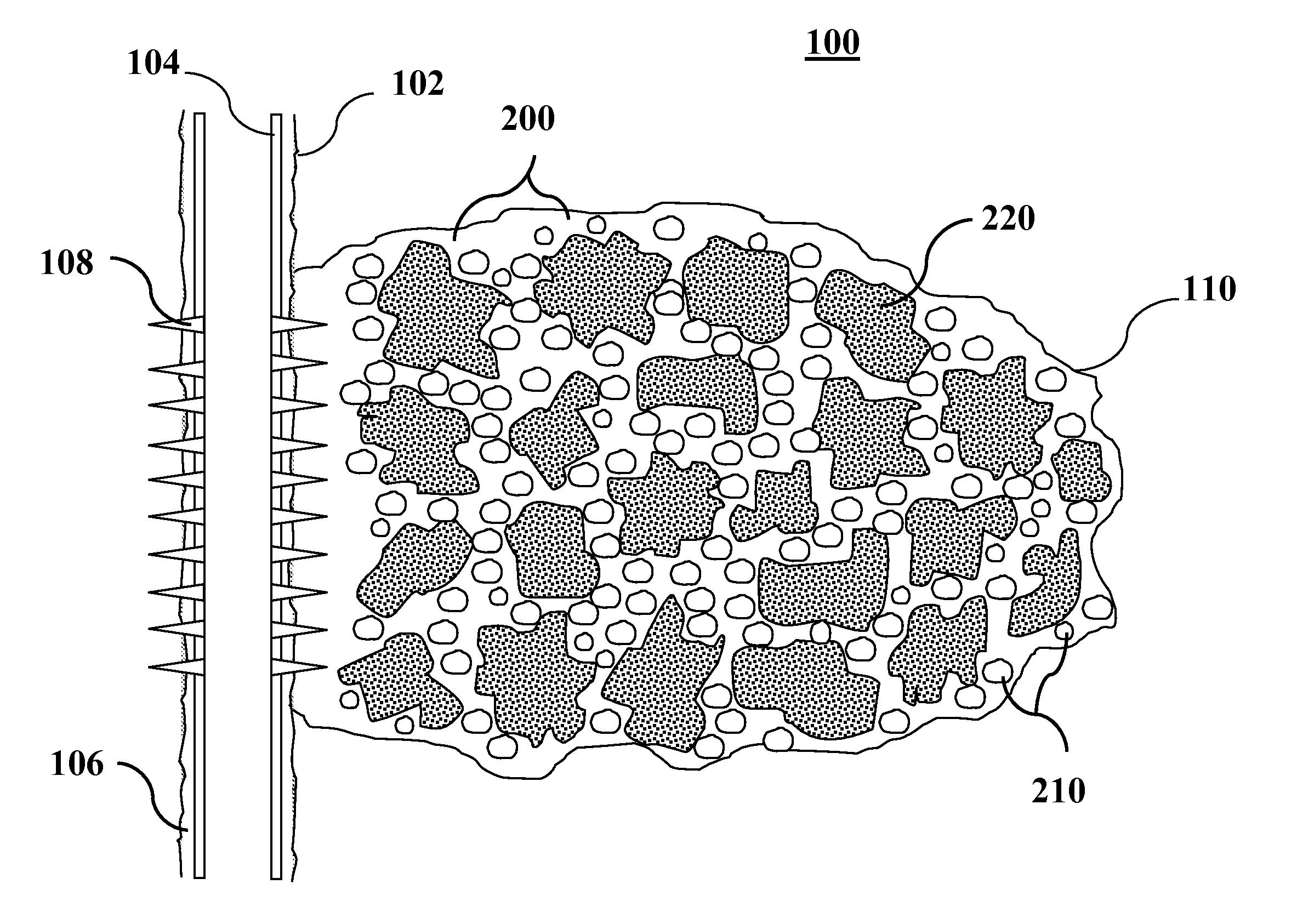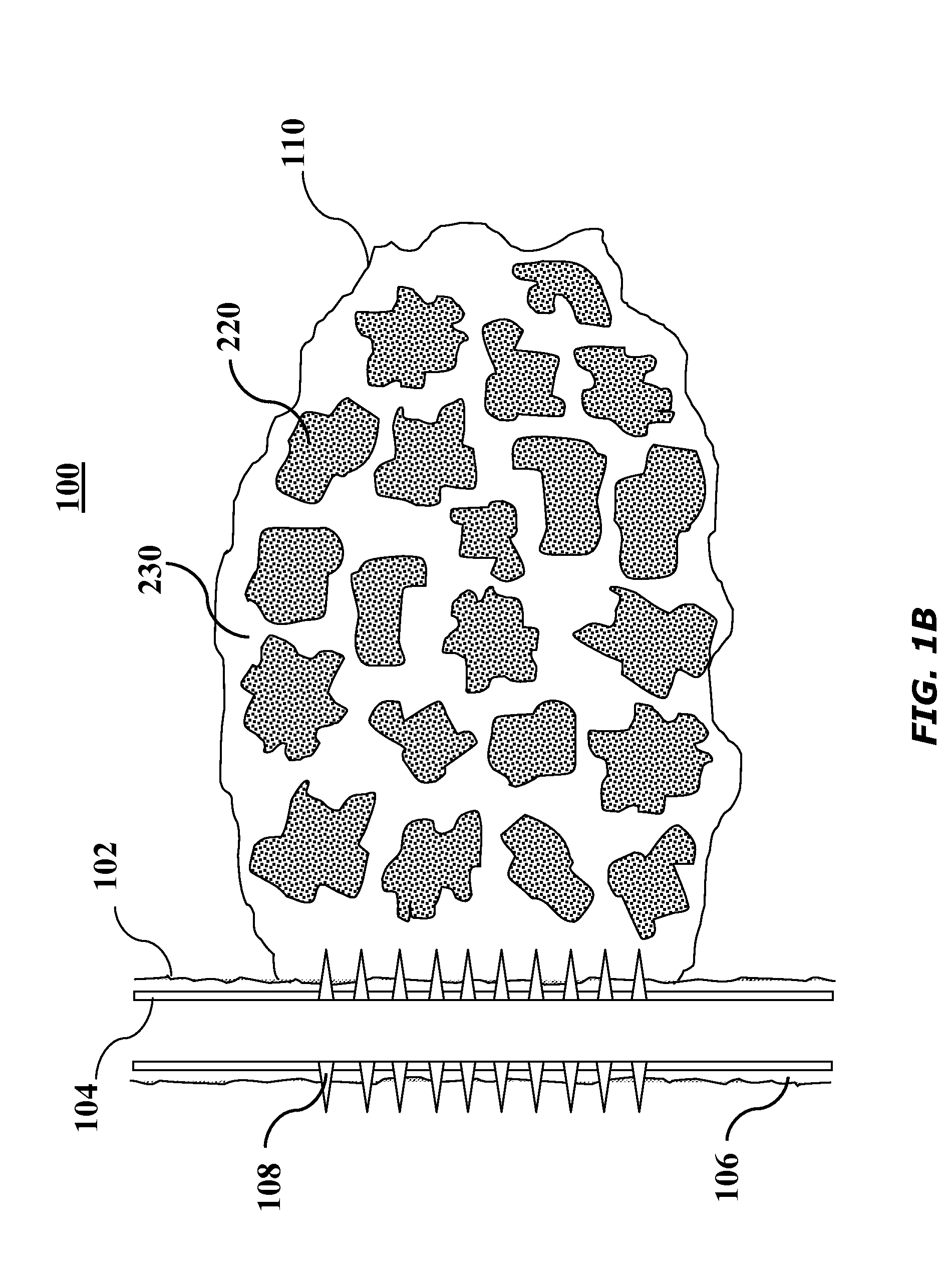Methods of forming high-porosity fractures in weakly consolidated or unconsolidated formations
- Summary
- Abstract
- Description
- Claims
- Application Information
AI Technical Summary
Benefits of technology
Problems solved by technology
Method used
Image
Examples
Embodiment Construction
[0015]The present invention relates to high porosity propped fractures and methods of creating high porosity propped fractures in portions of subterranean formations in weakly consolidated or unconsolidated formations.
[0016]The present invention provides methods of creating high porosity fractures. In certain methods of the present invention, proppant particulates coated with a “stabilizing substance” are placed randomly within a subterranean fracture to create a high porosity propped fracture. The proppant aggregates function as pillars or masses to support and hold the fracture from completely closing. Voids or proppant-free channels surrounding the proppant aggregates greatly enhance the conductivity of the propped fracture, allowing the formation fluid to produce into or communicate with the wellbore freely. As used herein, the term “stabilizing substance” refers to a material that is capable of being coated onto a particulate and that exhibits a sticky or tacky character such t...
PUM
 Login to View More
Login to View More Abstract
Description
Claims
Application Information
 Login to View More
Login to View More - Generate Ideas
- Intellectual Property
- Life Sciences
- Materials
- Tech Scout
- Unparalleled Data Quality
- Higher Quality Content
- 60% Fewer Hallucinations
Browse by: Latest US Patents, China's latest patents, Technical Efficacy Thesaurus, Application Domain, Technology Topic, Popular Technical Reports.
© 2025 PatSnap. All rights reserved.Legal|Privacy policy|Modern Slavery Act Transparency Statement|Sitemap|About US| Contact US: help@patsnap.com



